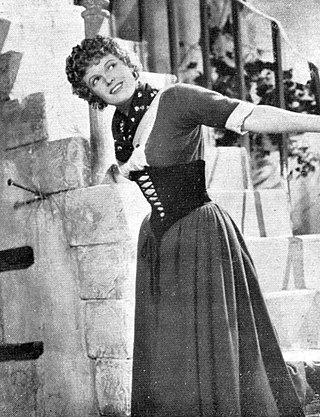
Dame Florence Marjorie Wilcox, known professionally as Anna Neagle, was an English stage and film actress, singer, and dancer.

Michael Charles Gauntlet Wilding was an English stage, television, and film actor. He is best known for a series of films he made with Anna Neagle; he also made two films with Alfred Hitchcock, Under Capricorn (1949) and Stage Fright (1950); and he guest starred on Hitchcock's TV show in 1963. He was married four times, including to Elizabeth Taylor, with whom he had two sons.

Margaret Mary Day Lockwood, CBE, was an English actress. One of Britain's most popular film stars of the 1930s and 1940s, her film appearances included The Lady Vanishes (1938), Night Train to Munich (1940), The Man in Grey (1943), and The Wicked Lady (1945). She was nominated for the BAFTA Award for Best British Actress for the 1955 film Cast a Dark Shadow. She also starred in the television series Justice (1971–74).

Forrest Meredith Tucker was an American actor in both movies and television who appeared in nearly a hundred films. Tucker worked as a vaudeville straight man at the age of fifteen. A mentor provided funds and contacts for a trip to California, where party hostess Cobina Wright persuaded guest Wesley Ruggles to give Tucker a screen test because of Tucker's photogenic good looks, thick wavy hair and height of six feet, five inches.
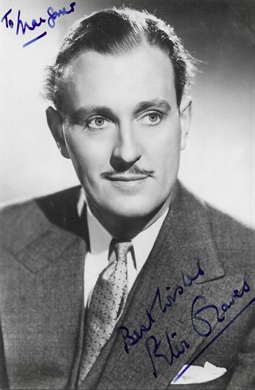
Peter George Wellesley Graves, 8th Baron Graves was an English actor.

Herbert Sydney Wilcox CBE was a British film producer and director.
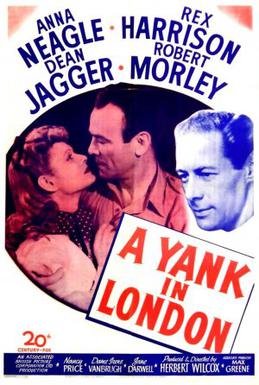
I Live in Grosvenor Square is a British comedy-drama romance war film directed and produced by Herbert Wilcox. It was the first of Wilcox's "London films" collaboration with his wife, actress Anna Neagle. Her co-stars were Dean Jagger and Rex Harrison. The plot is set in a context of US-British wartime co-operation, and displays icons of popular music with the purpose of harmonising relationships on both sides of the Atlantic. An edited version was distributed in the United States, with two additional scenes filmed in Hollywood, under the title A Yank in London.

Ronald Alfred Shiner was a British stand-up comedian and comedy actor whose career encompassed film, West End theatre and music hall.

Patricia Roc was an English film actress, popular in the Gainsborough melodramas such as Madonna of the Seven Moons (1945) and The Wicked Lady (1945), though she only made one film in Hollywood, Canyon Passage (1946). She also appeared in Millions Like Us (1943), Jassy (1945), The Brothers (1947) and When the Bough Breaks (1947).

The Magic Bow is a 1946 British musical film based on the life and loves of the Italian violinist and composer Niccolò Paganini. It was directed by Bernard Knowles. The film was entered into the 1946 Cannes Film Festival.

Limelight is a 1936 British musical film directed by Herbert Wilcox and starring Arthur Tracy, Anna Neagle and Jane Winton. It was released in the U.S. as Backstage.
Highly Dangerous is a 1950 British spy film starring Margaret Lockwood and Dane Clark. It was directed by Roy Ward Baker, based on a screenplay and novel The Dark Frontier written by Eric Ambler.
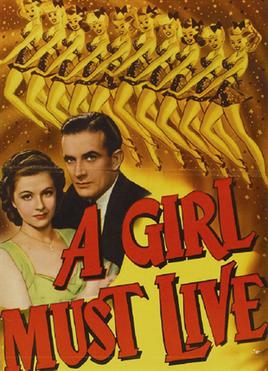
A Girl Must Live is a 1939 British romantic comedy film directed by Carol Reed that stars Margaret Lockwood, Renée Houston, Lilli Palmer, Hugh Sinclair, and Naunton Wayne. Based on a 1936 novel by Emery Bonett with the same title, the plot features three chorus line girls competing for the affection of a wealthy bachelor. It was one of a series of films Carol Reed made starring Margaret Lockwood.

Maytime in Mayfair is a 1949 British musical romance film directed by Herbert Wilcox and starring Anna Neagle, Michael Wilding, Nicholas Phipps, and Tom Walls. It was a follow-up to Spring in Park Lane.
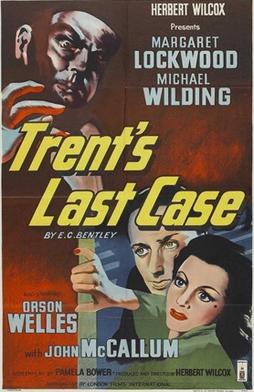
Trent's Last Case is a 1952 British detective film directed by Herbert Wilcox and starring Michael Wilding, Margaret Lockwood, Orson Welles and John McCallum. It was produced by Wilcox as part of a distribution agreement with Republic Pictures. It was based on the 1913 novel Trent's Last Case by E. C. Bentley, and had been filmed previously in the UK with Clive Brook in 1920, and in a 1929 US version.

Trouble in the Glen is a 1954 British comedy film directed by Herbert Wilcox and starring Margaret Lockwood, Orson Welles, Forrest Tucker and Victor McLaglen. It is loosely based on Maurice Walsh's 1950 novel of the same name. It was filmed in Trucolor for Republic Pictures.

Doctor Syn is a 1937 British black-and-white historical dramatic adventure film, directed by Roy William Neill for Gainsborough Pictures. It stars George Arliss, Margaret Lockwood, Graham Moffatt, and Ronald Shiner. The film is based on the Doctor Syn novels of Russell Thorndike, set in 18th century Kent. The character of Syn and the events at the film's climax were both softened considerably in comparison to Thorndike's original storyline.

Worm's Eye View is a 1951 British Technicolor comedy film directed by Jack Raymond and starring Ronald Shiner and Diana Dors. Based on the 1945 play of the same name by R.F. Delderfield, it was produced by Henry Halsted and Byron Films.

Nell Gwyn is a 1926 British silent romance film directed by Herbert Wilcox and starring Dorothy Gish, Randle Ayrton and Juliette Compton. It was based on the 1926 novel Mistress Nell Gwyn by Marjorie Bowen and follows the life of Nell Gwynne, the mistress of Charles II. Wilcox later made a second version of the film in 1934, Nell Gwynn which starred Anna Neagle.

My Teenage Daughter is a 1956 British drama film directed by Herbert Wilcox and starring Anna Neagle, Sylvia Syms and Norman Wooland. The screenplay concerns a mother who tries to deal with her teenage daughter's descent into delinquency. It was intended as a British response to Rebel Without a Cause (1955). It was the last commercially successful film made by Wilcox.



















